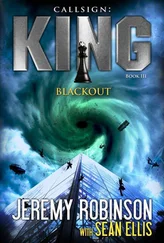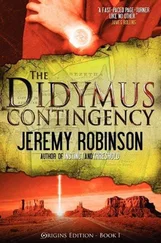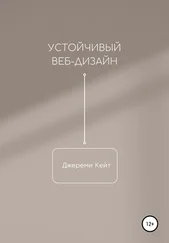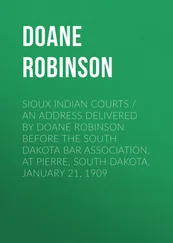An explosion rocked the valley wall ahead of them. Boulders and debris shot out.
The anti-G suit nearly crushed him this time as Pale Horse hit the brakes. White Horse pulled up and roared over them, spinning as he cleared the falling debris. The maneuver was an act of aerial acrobatics that looked well rehearsed, but Miller knew had more to do with training. Pale Horse pulled up over the debris, and then punched forward again, closing the distance between the two planes.
With White Horse in the lead, Miller could see just how close they were coming to the valley walls. As a child, Miller often closed his eyes at scary movies and a part of him wanted to do that now. But if he were going to die, it would be with his eyes open.
He looked to the side and saw the top of the valley wall. “We’re going up?”
“Valley ends up ahead,” Pale Horse said. “We’re going to be exposed for about thirty seconds before entering the next valley that will take us to the DZ.”
The DZ was the drop zone, and “drop” was a nice word for what they were going to attempt.
As soon as they left the valley behind, warning lights flashed and alarms blared.
“Missile lock,” Pale Horse said. “Hold on to you—”
The alarms went silent.
“I got your backs, boys!” Red Horse shouted. “Just needed to swat a fly first.”
“Glad to hear it,” White Horse said from the lead plane.
“You still have four bandits on your six. Over.”
“Keep them occupied for another minute,” Pale Horse said. “Then bug out. Over.”
“What?” Miller said.
“We can use them,” Pale Horse said.
“Copy that,” Red Horse said. “But if it’s okay with you, I’m just going to hang back until you’re on the ground and then shoot the shit out of them. Over.”
“Sounds like a plan.”
Miller saw White Horse dive into the ground and disappear from sight, so he was prepared for the motion, but the feeling of falling fast still unnerved him. He’d flown a lot. Jumped out of planes. Off of buildings. Never mind experiencing aerial combat onboard Air Force One, but after this dogfight, he was going to swear off fighter jets.
They entered the valley moving slower than the last. With Red Horse making the bandits’ life a misery of missile locks, they had less to worry about. That is, if you didn’t count the narrow valley walls squeezing them on either side. Happily, this valley was nearly a straight shot toward the DZ.
“Thirty seconds,” Pale Horse said.
Miller tensed. He knew what was coming. And he knew it would hurt.
A bridge appeared in the distance. He recognized the shape. Los Alamos National Laboratory lay on the left side of the gorge. The rest of the city to the right. The only way in was to cross what had been dubbed the Omega Bridge—a 106-foot tall, 422-foot long steel arch bridge that connected one side of Los Alamos Valley to the other.
The valley widened, exposing them to attack.
“Red Horse, let them off the leash,” Pale Horse said. “Over.”
“Copy that,” Red Horse replied. “Good luck and happy hunting. Out.”
Alarms sounded a moment later.
“Lock,” Pale Horse said.
The bridge loomed ahead. It was empty.
“Missiles away.”
Missiles. Plural. The enemy was unloading.
Warning beeps sounded. Beep, beep, beep.
“Here we go,” Pale Horse said.
White Horse passed under the Omega Bridge a split second before Pale Horse followed.
Beepbeepbeepbeep.
Both planes pulled up.
Spun sideways.
And exploded.
Miller felt the heat of the explosion, but it lasted only a fraction of a second. He felt a pressure beyond anything he had experienced while flying in the plane. The anti-G suit tried to compensate, but Miller’s vision began to fade. A split second before the missiles had struck the jets, Miller, Vesely, White Horse, and Pale Horse ejected. The rocket-propelled ejection seats launched from the cockpits like missiles, carrying them two hundred feet in the blink of an eye.
The twin explosions of the Hornets, along with several missiles striking and decimating the Omega Bridge, hid their escape from the bandits, which rocketed past a moment later.
The ejection seat jolted Miller hard as the parachute deployed. His vision returned in full a moment later. He saw the ground approaching fast. They’d ejected at an angle that launched the seats up and out of the valley. When the chutes deployed, they were only three hundred feet above the ground. Miller braced himself, but the impact didn’t play out exactly how he expected. He slowed suddenly, and then swung in an arc before crashing into the side of the tree. The seat absorbed most of the impact, but his damaged body begged for mercy.
Miller waited for the seat to stop moving, clutched his gear, and unbuckled from the seat. He fell just a few feet, but his legs ached at the effort after being confined in the F/A-18 for six hours.
The roar of jets brought his eyes up to the sky, which had turned purple because of the falling red flakes. He saw two F-16s turning around in a wide arc. He had no doubt they’d do a flyby in search of survivors. But then both planes began flying erratically. A missile cut through the sky and turned one of the planes into a fireball.
Red Horse. The F-22 Raptor gave chase to the second, but was pursued by two more bandits. A missile launched. Small explosions burst behind Red Horse, then the F-22 rose at a sharp angle. The missile exploded well behind the jet, which continued up and over until righting itself behind all three bandits. More missiles fired.
A hand on Miller’s shoulder spun him around.
He drew his sound-suppressed Sig Sauer P226 handgun and aimed it at Vesely’s head.
Vesely grinned. “Not bad, Survivor. I feared you’d been injured.”
Miller lowered the weapon. “Never better.”
“White Horse did not make it,” Vesely said. “Shrapnel from explosion. Where is Pale Horse?”
Pale Horse cleared his throat, bringing their eyes up. He was stuck in a tree, dangling six feet from the ground, but facedown. If he unbuckled he’d fall hard. Miller and Vesely braced the man. He unbuckled and they slowed his fall, both men grunting as the weight strained three stitched gunshot wounds.
Hidden in a stand of short pines, the three men peeled off their anti-G suits. Each wore black tactical suits with supply belts holding holstered handguns, extra ammo, and small, fifteen-minute pony bottles, just in case. Miller opened a case of disassembled weapons and quickly slapped them together, handing an UMP submachine gun to Vesely and Pale Horse. Each carried silenced handguns with spare ammo for both weapons.
Miller took a deep breath. His chest ached, but he didn’t notice. His mind recoiled when the air tasted like blood. Time to get inside, he thought.
“Ready?” Miller asked.
Vesely opened a duffel bag Miller hadn’t seen him bring. He nearly laughed when he saw the man’s cowboy hat and twin .38s emerge. He strapped the weapons to his waist and donned the Stetson.
“Now am ready.”
They left the trees behind and walked out onto a large parking lot. A full parking lot. But there were no people in sight.
Los Alamos National Laboratory was comprised of more than fifty buildings, but one stood out from the rest. In fact, there was nothing like it for hundreds of miles. The seven-story, 275,000-square-foot National Security Sciences Building (NSSB) towered above everything else in the area. And its design was no less impressive. The building’s all-glass front face curved like it had been cut away from a much larger circle. The sides of the building dropped down in a series of one-story steps where it merged with an all-glass square lobby area, a large circular auditorium, and a long stretch of terra-cotta wall that contrasted nicely with the blue-tinted windows covering the rest of the building.
Читать дальше












